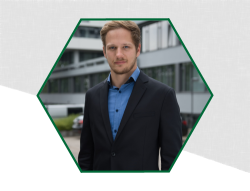Powder bed fusion of metals using a laser beam (PBF-LB/M according to DIN EN ISO/ASTM 52900) has reached market maturity. In addition to the development of new materials and enabling new applications, the industry is currently focusing on increasing productivity and reducing costs. In this context, increasing the layer thickness can increase productivity, but often leads to a deterioration of surface quality and part density. Using variable layer thicknesses depending on the manufactured geometry is well-known from filament-based material extrusion processes and is called adaptive slicing.
This study investigates the manufacturing aspects of adaptive slicing using AlSi10Mg. Based on an investigation of the powder raking process, laser beam absorption of the different powder layer thicknesses is quantified using diffuse reflectance infrared Fourier transform spectroscopy. The process window is identified and analyzed, focusing on the achievable productivity and required energy input. Furthermore, the suitability of layer thicknesses and processing parameters is analyzed by measuring the dimensional accuracy and process stability of overhang structures. The heat input, dissipation, and potential heat-up are investigated and compared to conventional processes by part-scale thermal simulations.
In this study, parameters are provided for layer thicknesses of 120 µm with an almost three-fold increase in productivity for AlSi10Mg in non-overhanging structures with a part density above 99.7 %. It has also been shown that adaptive slicing in PBF-LB/M can increase productivity while decreasing the impact on part quality. Future work will focus on automated algorithms to optimize and automize adaptive slicing.
Keywords
- Adaptive Slicing
- Powder Bed Fusion Of Metals Using A Laser Beam
- Productivity

